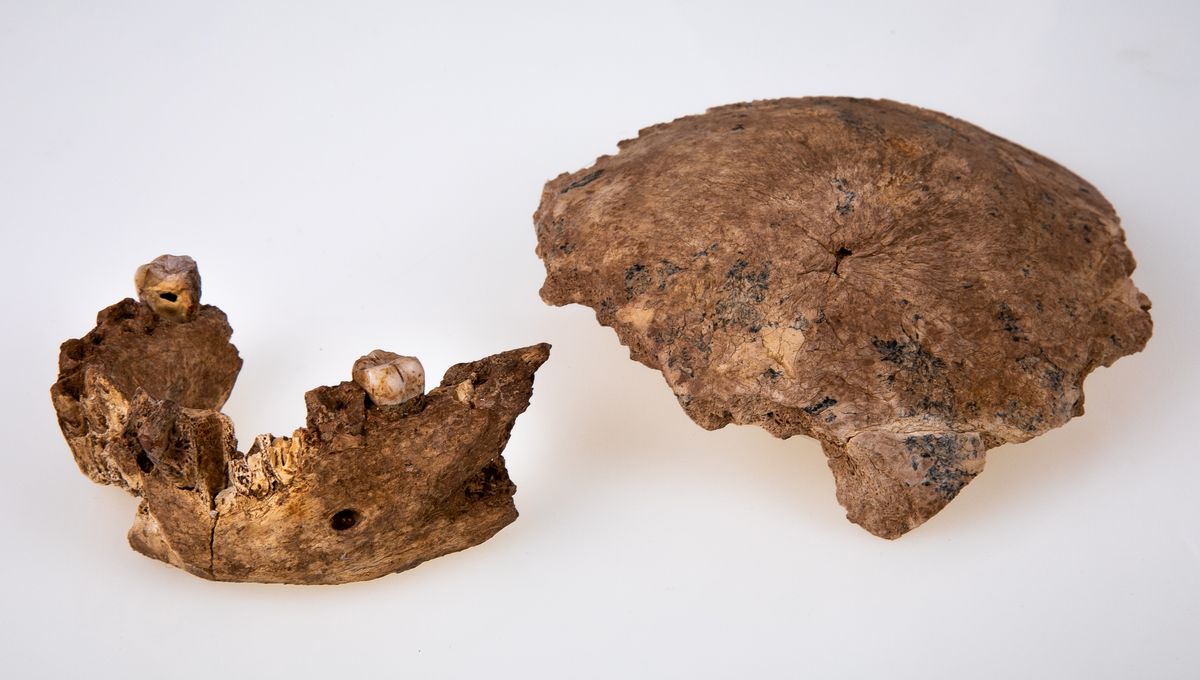
We have known for some time that our distant ancestors got more than familiar with other archaic hominins, especially Neanderthals. However, in 2021, researchers discovered what they believe is a previously unknown population of ancient hominins who exhibit a unique blend of Neanderthal and archaic human traits. The finding suggested that this other population had a long and dynamic history of interaction with Homo sapiens.
New fossils give pause for thought
In 2021, at an archaeological site called Nesher Ramla, situated between Tel Aviv and Jerusalem in Israel, an international team of researchers made an intriguing discovery: The site itself was once a sinkhole used as shelter by ancient people in an otherwise open landscape.
Over time, they spotted evidence of their existence, such as stone tools, bones from their hunts, and remnants of their fires. But then two fragments of a strange skull appeared in the mix and things got really interesting – and maybe contentious.
According to the researchers who first described the fragments, they could belong to a previously unknown and late-surviving Homo population, which lived in the region between 140,000 and 120,000 years ago.
Researchers Israel Hershkovitz, Yossi Zaidner, and colleagues detailed their findings in two companion studies, which suggested that this new population of hominid, known as Nesher Ramla Homo, traded both their genes and culture with nearby populations of Homo sapiens for thousands of years.
The fossils consisted of a right parietal bone, from the back/side of the skull (and some fragments from the left parietal) and a practically complete mandible (jawbone). After analysis, the team realized the fragments belonged to someone who, in their opinion, was not fully Homo sapiens, but neither were they Neanderthal – the only other hominin species known to have lived in the region.
This was because the parietal bone had “archaic” traits that are completely different from early and recent Homo sapiens, as well as being too thick for those found in Neanderthals. Moreover, the jawbone had archaic features but also some that also appear in Neanderthals.
Whatever they were dealing with, the team reasoned, it was a novel population of Homo that fell somewhere between the two and could represent one of the last surviving common ancestors between Neanderthals and humans.
“The interpretation of the Nesher Ramla fossils and stone tools will meet with different reactions among paleoanthropologist,” Dr Marta Lahr, a paleoanthropologist and Director of the Duckworth Laboratory at the University of Cambridge said in a statement at the time.
“Notwithstanding, the age of the Nesher Ramla material, the mismatched morphological and archaeological affinities, and the location of the site at the crossroads of Africa and Eurasia make this a major discovery.”
Peculiarities in the fossil record
If Hershkovitz and the team are correct, then it could explain certain features of other fossils recovered from this area, ones that were previously designated either Neanderthal or H. sapiens.
For instance, the famous Lady of Tabun (known as Tabun C1 to archaeologists and her friends). This specimen was discovered in 1932 by Yusra, a pioneering archaeologist, and her field director, Dorothy Garrod.
If Tabun C1 and other fossils are indeed members of this potentially new hominid population, then this would have a massive impact on our understanding of human evolution.
However, some are skeptical. In a blog post, John Hawks, a paleoanthropologist, suggests there may be other explanations other than the existence of a new hitherto unknown population of H. sapiens.
“It is a provocative suggestion that a long-lasting separate population once existed in southwest Asia”, Hawks wrote in 2022. “The idea puts together at least three fossil samples in the region that otherwise don’t fit together with Neandertals nor contemporary fossil samples in Africa.”
For Hawks, one alternative explanation could relate to Denisovans, another archaic hominid population known to have intimate relationships with Neanderthals and early humans. However, he adds that this is just one suggestion.
“[I]t gives me pause that the fossil data just aren’t good enough to rule out such a scenario. We know more about Neandertals than any other population from this time period, and that’s still not enough to fully characterize Neandertal variation,” Hawks continued. “Across 400,000 years of evolution, not every member of a ‘Neandertal’ population is going to have the traits that anthropologists first recognized and defined in fossils of the last 120,000 years.”
At the time of writing, it is still not clear whether Nesher Ramla Homo really is a new population of humans, but future work could shine more light on this mystery.
Source Link: Who Were Nesher Ramla Homo?